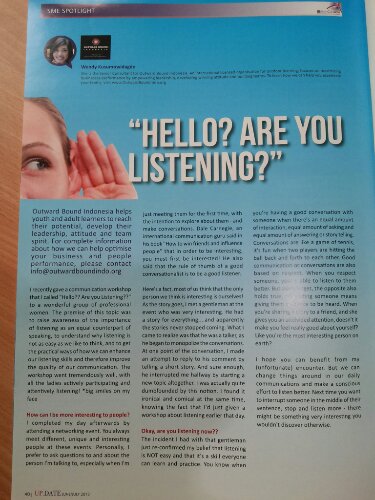In my profession as a Coach in the People Development business, I see mistakes that HR Managers, Directors, even CEOs make in confusing team building trainings as a cost versus an investment for the company. In an economic sense, investment is the purchase of goods that are not consumed today, but are used in the future to create wealth.
Cost is the price paid to acquire something. Training is an investment because people are assets, not commodities. To emphasize the phrase ‘used in the future to create wealth’ to describe investment, as leaders we believe that our employees and team members will generate wealth for the organization, therefore we invest in them by developing them. One of the frequent arguments against investing in professional development is “What happens if I train my people and they leave?” A better question is “What happens if you don’t train them and they stay?”
Benefits of Team Development Trainings
An effective team building training will be able to help your organization reach new heights by building trust among the members, improving communication and collaboration, boosting their morale and essentially increasing productivity and performance. What does all this mean for the bottom line of a company? According to studies, employees with high morale are 89% more likely to put in extra effort and extra hours at work.
So in order for your company to get the most ROI from a team building training, I’d like to share the 5 most common mistakes people make that you need to avoid:
-
Being Unclear about your Goals
You must be clear about what you want to attain from the training, and how you wish your training partner to help you reach your goals. Do you just want your employees to have a shared experience, or do you actually want them to learn about each other and to synergize together? By setting a clear goal, it’ll help you to consider the right approach as well as partner for your endeavors (see #2 below)
-
Picking the Wrong Partner to Develop your Team
Next to #1, this is the second most important element to having a successful team building training. The right training partner can diagnose what your team needs, has the right software and hardware to deliver the programme, has the experience and credentials, and most critically understands how important this investment is for you.

-
Thinking Team Building must be Fun
Too many people mistake team building as some kind of a paid vacation that’s injected with some amount of learning, sponsored by the company. The point of learning is stretching our old thinking into new philosophies, and this process to some degree requires leaving our comfort zone – and for some, this is no walk in the park. So if you’re thinking of investing money on fun in the name of training, you’d better think again.
-
Thinking Team Building Training is to Play Games
The most effective method to develop a team is through a shared experience, scientifically known as experiential learning training. You and other team members are outside of a classic 4-wall classroom, are given a series of problem-solving tasks and simulations to be solved together. But there is more than meets the eye. The activities or simulations are only one part of the equation. An effective experiential learning training is one that delivers both the experience and the learning equally well. It should provide a meaningful experience; facilitate impactful reflections to draw insights behind the activities and relate them back to real-life situations.
-
Thinking Team Building is a Quick Fix
Rome was not built in one day, and neither are teams. Studies show that people need 21 consecutive days to form a new habit, hence repetition is key. A good team building training is able to offer solutions for your teamwork issues that give a long-term impact. They say, a quick fix is a short-term fix. So if you want a strong team that’s permanent, you have to be willing to put in the time and the work.
We all desire a team that works like a well-oiled machine and yields high productivity. Sometimes we’ve got it, sometimes we haven’t got it yet. One thing is for sure, wherever we are in that spectrum, a well-coordinated and engaged team doesn’t just happen automatically. We call it teamwork because the whole team has to put in the work. You may contract a training partner to help develop your people, but building your teams is not their full-time job, it’s yours. My wish in your endeavor for wealth in your organization, is that you are investing in your people correctly and wisely.
This article has published on Now! Jakarta magazine





